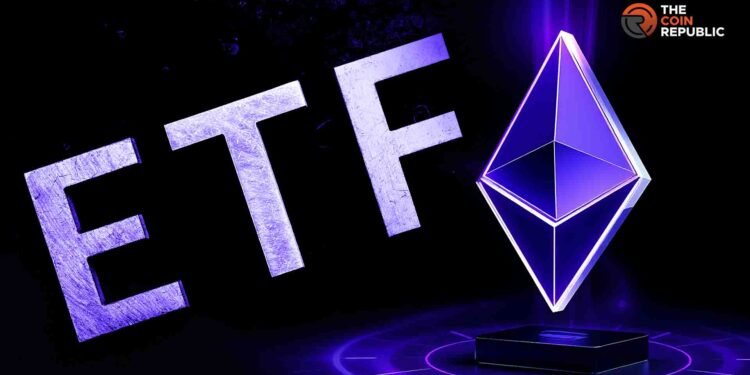Ethereum Facing Market Headwinds and Awaited ETF Progressions
Struggling to breach the $2,000 threshold, Ethereum’s value is restricted by prevalent negative market sentiments. However, market observers are closely eyeing a pivotal development that could potentially alter the landscape: the prospective approval of staking in U.S.-based Ethereum exchange-traded funds (ETFs).
The recent acknowledgement by the U.S. Securities and Exchange Commission (SEC) of Fidelity’s request to integrate staking into its ETF adds to similar proposals by entities like Grayscale and 21Shares. Analysts believe this could serve as a significant driver for Ethereum’s price recovery, although ongoing regulatory hurdles are causing cautious investor sentiment.
Insights from Experts on Regulatory Advancements
While the SEC’s progress in evaluating Fidelity’s proposal is noteworthy, uncertainties persist regarding approval timelines. The regulatory body has postponed verdicts on several cryptocurrency ETF petitions, including those for popular assets such as Dogecoin (DOGE), Solana (SOL), and XRP. Nate Geraci, president of The ETF Store, highlights that such delays are standard procedure for the SEC, especially with the pending confirmation of Paul Atkins, a nominee for SEC leadership during the Trump administration.
Standard Chartered analysts are optimistic, projecting that if Ethereum ETF staking is allowed, ETH’s value could surge past $14,000 by year-end. However, achieving this milestone seems ambitious given the SEC’s cautious approach to crypto regulations.
Market Dynamics: Trader Sentiment and Industry Trends
Despite Ethereum’s price struggles, derivatives market traders are positioning for a potential turnaround. According to CoinGlass, leveraged long positions in ETH have amassed $753 million, surpassing short positions at $744 million. Historically, such a configuration indicates an expected price rebound after prolonged bearish trends.
Prominent crypto trader Ted Pillows draws parallels between Ethereum’s current market behavior and the significant slump witnessed in March 2020. He notes, “While ETH may dip to the $1.4K–$1.6K range, it does not signify the end—$10K ETH is still feasible this cycle.”
Competitive Landscape and Institutional Engagement
Despite the potential ETF staking scenario, Ethereum faces challenges jeopardizing its market standing. Its dominance in crucial sectors like stablecoin transactions and decentralized finance (DeFi) is diminishing. For instance, Tron has overtaken Ethereum in Tether (USDT) transactions, while Layer-2 solutions like Base and Arbitrum continue to chip away at Ethereum’s market share.
Recent outflows from Ethereum spot ETFs have exceeded $513 million over the last three weeks, reducing total net inflows to $2.64 billion. This trend raises concerns about declining institutional interest, compounded by Ethereum’s waning profitability. The network has accrued $210 million in revenue this year, significantly trailing competitors like Uniswap, Solana, and Tron.
Impact of Regulatory Amendments on the Crypto Sector
In a related development, the U.S. House of Representatives passed a bill aimed at rescinding an IRS rule that mandated DeFi brokers to report transactions akin to traditional securities brokers. Sponsored by Rep. Mike Carey and Sen. Ted Cruz, the legislation garnered support from lawmakers advocating for fostering innovation and deterring crypto firms from relocating abroad. If signed into law by President Donald Trump, this could create a more favorable environment for DeFi initiatives, many of which heavily rely on Ethereum.
Currently valued around $1,860, ETH recently encountered resistance at $2,140, fueling concerns about a potential downtrend. K33 Research analysts suggest that despite promising technical upgrades like Ethereum’s forthcoming Pectra update, they might not be sufficient to drive prices upwards immediately. They note, “The predominant theme in the last two years has been ETH’s underperformance,” indicating that integrating staking rewards into U.S.-based Ethereum ETFs could serve as the pivotal catalyst for revitalizing market momentum.
Conclusion: Navigating Ethereum’s Future Path
While Ethereum faces current obstacles stemming from regulatory uncertainties and mounting competition, the awaited ETF advancements could significantly reshape its market trajectory. With traders anticipating a potential recovery and the looming promise of favorable regulatory shifts, Ethereum’s journey ahead remains intricate yet full of potential opportunities. As market dynamics evolve, stakeholders must remain vigilant and adaptable to navigate through the complexities of this ever-evolving landscape.








